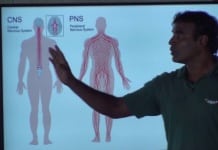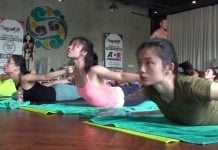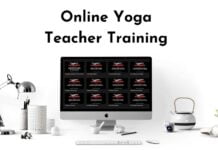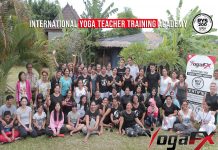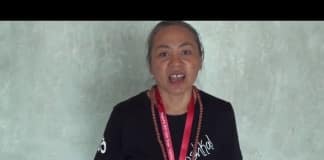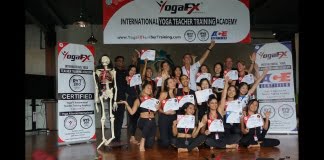Most people usually start their yoga instructor class by attending a 200-hour RYS teacher training course.
As previously stated, there are many programs available, depending on the style or tradition of yoga, logistics (part-time, full-time intensive, local or abroad), and cost. Learn More about Yoga Instructor Class!
200-hour programs focus on teaching yoga to the general population. This includes:
- Asana and alignment (which also includes how to guide others into the poses and class sequencing)
- Anatomy and Physiology
- Philosophy and Meditation
All 200-hour programs vary in terms of the style of yoga. But, to ensure a well-rounded education, they all adhere to these basic guidelines as outlined by Yoga Alliance.
Why 200 Hours?
In a 200-hour course, you will not only practice but also learn in-depth about yoga poses–how to execute the poses correctly according to your own physical abilities. You will practice yoga for at least two hours daily, so you come to really understand the mechanics of the poses and what they entail.
You will also learn anatomy and physiology, and how they relate to yoga. The benefits and contraindications of the poses will be discussed. Once your physical practice is combined with the knowledge of anatomy and physiology, then the study of alignment in poses comes into play. This is a very important aspect of any yoga teacher training course, as we practice yoga for health … not to injure ourselves!
There will also be sessions on the philosophical aspects of yoga, which are based on Patanjali’s Eight Limbs of Yoga. Yoga is all about how to live in harmony with ourselves and others, and during these philosophy sessions, many questions will arise.
Then there is also the practice of Pranayama (breathing techniques). This is a crucial step toward the achievement of Samadhi (Divine Union). Your breath affects the quality of your physical, emotional, and mental health.
Throughout the course, you will immerse yourself in yoga. This is not only for your own benefit but also for others: you can only teach what you truly understand. Along the way, the trainers will guide you on how to assess and adjust others into the poses, which includes the use of props or proper verbal cues.
In the end, 200 hours will actually seem too short!
As with everything else in life, the learning does not end there. In fact, after a teacher training course, you will come to realize that this is only the beginning of your journey.
How Long Does Yoga Instructor Class Take?
A yoga teacher’s journey begins even before signing up for a teacher training course. Indeed, it is ideal to have already developed a consistent yoga practice before attending a 200-hour program. This way, your body will already be reasonably fit for the physical rigor, and your mind will be prepared with an idea of the asanas and what goes on during class. Is There Anything You Can Do Before A YTTC To Better Prepare Yourself?
Your first official step to becoming a certified teacher will be completing a 200-hour program. After that, if you wish to continue and become a 500-hour RYT, you can go for a 300-hour program.
Ideally, you’d be able to assist a senior yoga teacher for a few months. Learning directly from someone will definitely fast-track your path to expertise.
In short, there is no definitive timeframe whereby after ‘X amount of time, you will become a yoga teacher. Yoga is very hands-on, and the more experience you have with it–regardless of whether it’s with asanas, philosophy, or meditation; the better equipped you will be to teach.
Will a Yoga Certification Make You a Great Yoga Teacher?
Formal yoga training is generally the first step to becoming a yoga teacher. But how often do you hear of people failing at yoga teacher training? To become a great teacher, you will have to earn it.
Upon completing a teacher training course, most people are somewhat shocked when they realize they know so little! Yes, teacher training will provide you with a lot of knowledge, but that’s only the tip of the iceberg.
Indeed, there are legendary yoga teachers out there. If they did not receive any formal training, where does all this magic come from?
To be a great teacher, you will have to be dedicated to exploring yoga through attending workshops, conducting your own research, and reading books. But most importantly, you will have to learn through your own experience. Yoga is an incredibly deep aspect of life; it is not limited only to the asanas. It also includes the realms of the spiritual and philosophical. And no organization will be able to sign a certification of your spiritual evolution.
To be able to guide your students through a class and articulate exactly what is happening—which part of the body is feeling what, how to go into the pose, etc.—requires a lot of experience on your part.
A teacher can only guide students as far as his own experience.
Join Our Yoga Teacher Training And Main Event








